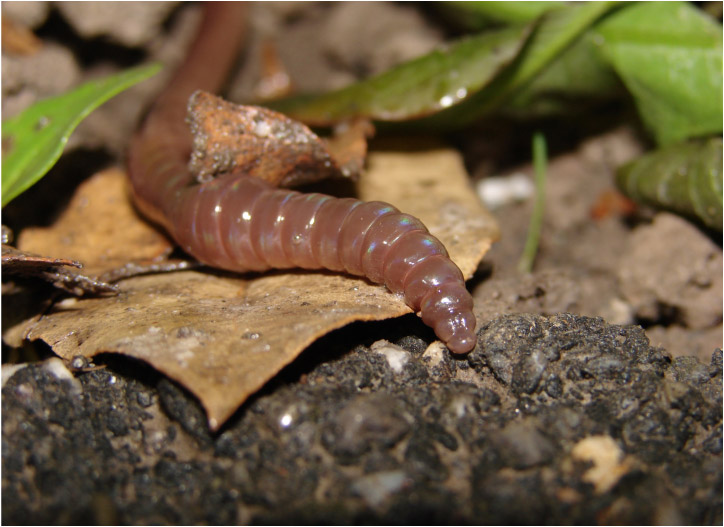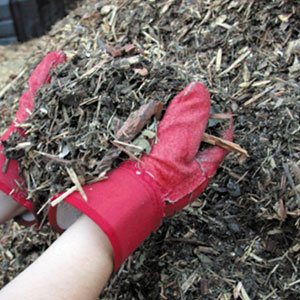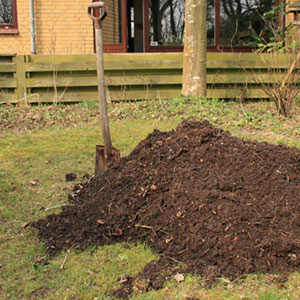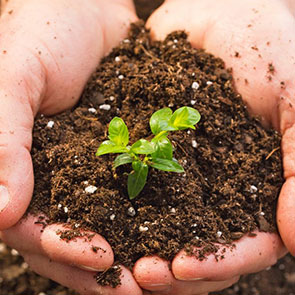
Earthworms gradually pull organic matter from mulch or compost down into the soil, improving soil quality. Image credit: Bigstock/Vitaliy Pakhnyushchyy
Restore Compacted Soils
Healthy soil typically is more than 40 percent pore space, with large pores that promote drainage and small pores which help store water. This combination enables air and water to penetrate, promotes good drainage, and allows soil organisms to breathe and plant roots to grow. Machinery, foot traffic and pounding rain compact the soil and make life in the soil difficult. Compacted soils can flood and also be susceptible to drought, since water runs off rather than infiltrating. You can repair compacted soil by rebuilding its spongy structure.
Strategies for restoring overly compacted soils:
- Top-dressing planting beds with several inches of compost will improve lightly compacted soils. Earthworms and other soil fauna will gradually pull it down into the soil, loosening it and improving water-holding capacity. A 2- or 3-inch layer of shredded leaf mulch or wood chips will provide similar benefits.
- Cultivating the soil lightly, avoiding large plant roots and incorporating compost into the soil can speed the healing process.
- More extreme physical aeration may be necessary to repair highly compacted soils. Caution should be taken when working under and around existing vegetation to avoid damaging root systems. Tree experts can provide guidance on the most appropriate methods which may include air-excavating tools, vertical mulching or radial trenching.
- Protect the soil from recompacting. Create pathways and use garden walls, fences or mulch to keep foot traffic off the soil.










